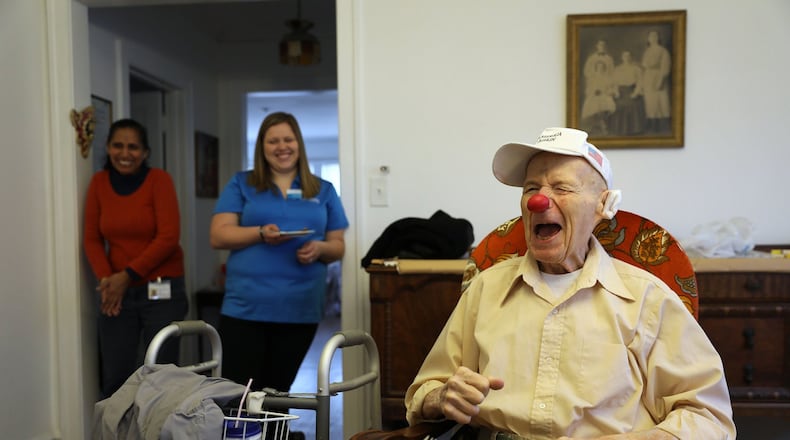As more and more baby boomers cross the threshold into old age, members of the Me Generation are confronting a new and growing problem: Who will take care of them when they can no longer care for themselves?
It’s a situation few families are prepared for but one many will face. As relatives gather on special occasions, it often becomes clear that falls, memory lapses and an assortment of maladies have taken a toll on aging loved ones and help is needed.
But a shortage of qualified workers, rising costs and a demographic shift have seniors facing a caregiver crisis that could take some of the luster out of their golden years.
“We are absolutely in a crisis mode,” said Robert Espinoza, vice president of policy for New York-based PHI, a direct care workforce research organization. “Providers are routinely reporting that they can’t find and they can’t keep direct care workers, which makes it impossible to provide the care that consumers need.”
Sometimes a supplement to family caregivers, sometimes the only option, paid caregivers provide seniors with support for the activities of daily life, such as bathing, dressing and eating. More than half of home caregivers have a high school education or less, according to PHI, and their pay is on par with wages for fast-food and retail workers.
Their value may increase significantly in the years ahead.
The U.S. population is rapidly aging: Roughly 10,000 baby boomers turn 65 every day, and more than half eventually will need some form of long-term care, according to Pew Research.
There are assisted living facilities and nursing homes, but increasingly seniors are looking to remain in their homes as they age.
Meanwhile, demand for personal caregivers already is outstripping supply, experts say.
“Part of the reason that we’re seeing a growing demand for home care workers is a cultural shift for aging at home,” Espinoza said.
For families, navigating a maze of lightly regulated home services agencies to find the right caregiver may not be easy, and it won’t be cheap.
The cost of home health care rose more than 6 percent last year, according to a report published in September by Genworth Financial, a Virginia-based firm that offers long-term care insurance policies.
Consumers paid a national median rate of $22 an hour for caregiver services, or more than $49,000 per year, according to the report, which was based on surveys of more than 15,000 nursing homes, assisted living facilities, adult day health facilities and home care providers.
Standard health insurance and Medicare do not cover these costs, and while Medicaid helps defray caregiver costs for people with chronic conditions who meet income requirements, most families do not qualify.
Long-term care insurance is another option, but less than 8 percent of Americans have purchased it due to rising premiums and a dearth of providers, according to a 2016 study by the U.S. Department of Health and Human Services.
That means most families end up footing the bill themselves, a financial burden that can rapidly deplete a lifetime of savings.
Despite the rising fees, caregiver pay hovers near minimum wage, with about half of the fees going to the agency itself.
Home care is among the fastest-growing occupations in the U.S., with the workforce doubling to 1.6 million over the past 10 years, and 600,000 more jobs projected to be added over the next decade, according to PHI, the direct care research organization.
Experts say even that won’t be enough to keep up with growing demand, citing a number of factors lessening interest among prospective caregivers.
“It’s not an easy job at all,” said Amy York, executive director of the Eldercare Workforce Alliance, a Washington-based coalition of senior care organizations.
York said low wages, isolation and a lack of training contribute to a “significant turnover” among caregivers and an ongoing worker shortage for the industry.
“The working conditions can be very difficult,” she said. “And they can go down the street to McDonald’s and make as much if not more money.”
Employers struggle to recruit and retain home care workers, who make a median hourly wage of $10.49, according to PHI. Two-thirds of caregivers work part time.
About the Author
Keep Reading
The Latest
Featured


